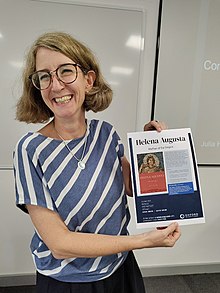
Flavia Julia Helena,also known as Helena of Constantinople and in Christianity as Saint Helena,was an Augusta of the Roman Empire and mother of Emperor Constantine the Great. She was born in the lower classes traditionally in the city of Drepanon,Bithynia,in Asia Minor,which was renamed Helenopolis in her honor,although several locations have been proposed for her birthplace and origin.
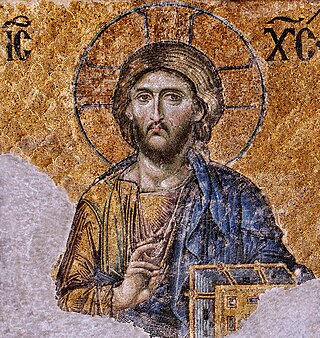
Byzantine art comprises the body of artistic products of the Eastern Roman Empire,as well as the nations and states that inherited culturally from the empire. Though the empire itself emerged from the decline of western Rome and lasted until the Fall of Constantinople in 1453,the start date of the Byzantine period is rather clearer in art history than in political history,if still imprecise. Many Eastern Orthodox states in Eastern Europe,as well as to some degree the Islamic states of the eastern Mediterranean,preserved many aspects of the empire's culture and art for centuries afterward.
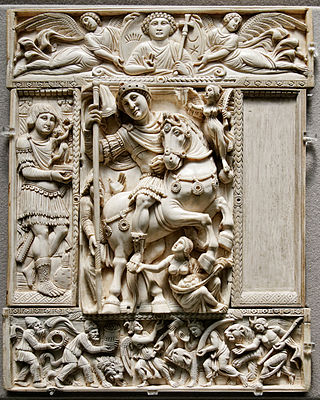
Late antiquity is sometimes defined as spanning from the end of classical antiquity to the local start of the Middle Ages,from around the late 3rd century up to the 7th or 8th century in Europe and adjacent areas bordering the Mediterranean Basin depending on location. The popularisation of this periodization in English has generally been credited to historian Peter Brown,who proposed a period between 150 and 750 AD. The Oxford Centre for Late Antiquity defines it as "the period between approximately 250 and 750 AD". Precise boundaries for the period are a continuing matter of debate. In the West,its end was earlier,with the start of the Early Middle Ages typically placed in the 6th century,or even earlier on the edges of the Western Roman Empire.

Josef Rudolph Thomas Strzygowski was a Polish-Austrian art historian known for his theories promoting influences from the art of the Near East on European art,for example that of Early Christian Armenian architecture on the early Medieval architecture of Europe,outlined in his book,Die Baukunst der Armenier und Europa. He is considered a member of the Vienna School of Art History.
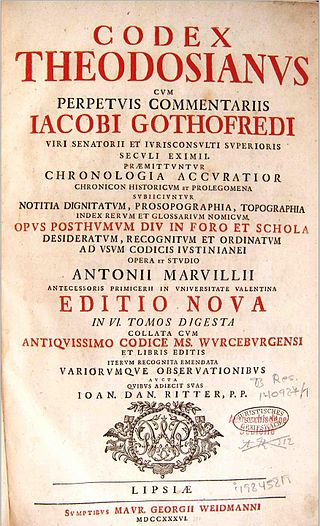
The Codex Theodosianus is a compilation of the laws of the Roman Empire under the Christian emperors since 312. A commission was established by Emperor Theodosius II and his co-emperor Valentinian III on 26 March 429 and the compilation was published by a constitution of 15 February 438. It went into force in the eastern and western parts of the empire on 1 January 439. The original text of the codex is also found in the Breviary of Alaric,promulgated on 2 February 506.

Flavia Valeria Constantina,later known as Saint Constance,was the eldest daughter of Roman emperor Constantine the Great and his second wife Fausta,daughter of Emperor Maximian. Constantina may have received the title of Augusta from her father,and is venerated as a saint,having developed a medieval legend wildly at variance with what is known of her actual character.

The Council of Nablus was a council of ecclesiastic and secular lords in the crusader Kingdom of Jerusalem,held on January 16,1120.

The growth of Christianity from its obscure origin c. 40 AD,with fewer than 1,000 followers,to being the majority religion of the entire Roman Empire by AD 400,has been examined through a wide variety of historiographical approaches.
Anicius Hermogenianus Olybrius was a politician and aristocrat of the Roman Empire.
The Column of Arcadius was a Roman triumphal column in the forum of Arcadius in Constantinople built in the early 5th century AD. The marble column was historiated with a spiralling frieze of reliefs on its shaft and supported a colossal statue of the emperor,probably made of bronze,which fell down in 740. Its summit was accessible by an internal spiral staircase. Only its massive masonry base survives.

Yitzhak Hen is Anna and Sam Lopin Professor of History,formerly at Ben-Gurion University of the Negev (Israel). Since August 2018 he has been the director of Israel Institute for Advanced Studies at the Hebrew University of Jerusalem.
Gunnar Brands,is a German classical archaeologist.
John Richard "Jaś" Elsner,is a British art historian and classicist,who is Professor of Late Antique Art in the Faculty of Classics at the University of Oxford,Humfry Payne Senior Research Fellow in Classical Archaeology and Art at Corpus Christi College,Oxford,and Visiting Professor of Art History at the University of Chicago. He is mainly known for his work on Roman art,including Late Antiquity and Byzantine art,as well as the historiography of art history,and is a prolific writer on these and other topics. Elsner has been described as "one of the most well-known figures in the field of ancient art history,respected for his notable erudition,extensive range of interests and expertise,his continuing productivity,and above all,for the originality of his mind",and by Shadi Bartsch,a colleague at Chicago,as "the predominant contemporary scholar of the relationship between classical art and ancient subjectivity".
Sabine Renate Huebner/Hübner is Professor of Ancient History and Head of Department at the University of Basel in Switzerland. She is an expert on the religious and social history of antiquity,particularly of Greco-Roman Egypt.
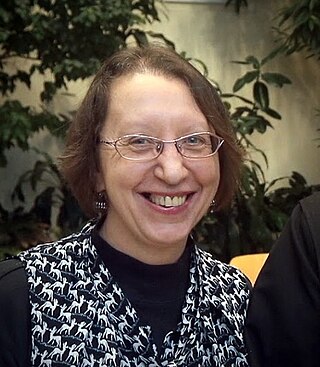
Marianne Sághy (1961–2018) was a Hungarian expert on the religious and social culture of Late Antiquity,with an especial focus on the cult of saints and hagiography. She was associate professor at the Department of Medieval Studies,Central European University,and at the Department of Medieval and Early Modern Universal History,Eötvös Loránd University,Budapest.

Kate Cooper FRHistS is a professor of history and former head of the History Department at Royal Holloway,University of London,a role to which she was appointed in September 2017 and she stood down in 2019. She was previously professor of ancient history and head of the Department of Classics and Ancient History at the University of Manchester,where she taught from 1995.

Lucy Grig is Professor of the History of Late Antiquity and a former Head of Classics (2019-2022) at the University of Edinburgh.
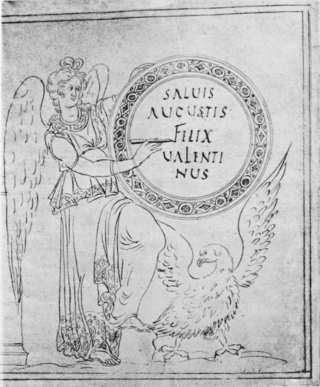
Michele Renee Salzman is a distinguished professor of history at the University of California,Riverside. She is an expert on the religious and social history of late antiquity.
Ann Marie Yasin is an Associate Professor of Art History and Classics at the University of Southern California specializing in the architecture and material culture of the Roman and late antique world. She studies materiality,built-environments,landscapes,and urbanism as they pertain to the ancient and late ancient religious worlds.

Kristina Sessa is Professor of History at Ohio State University. She is an expert on the cultural history of the late antique and early medieval Mediterranean world from ca. 300-700 CE.

